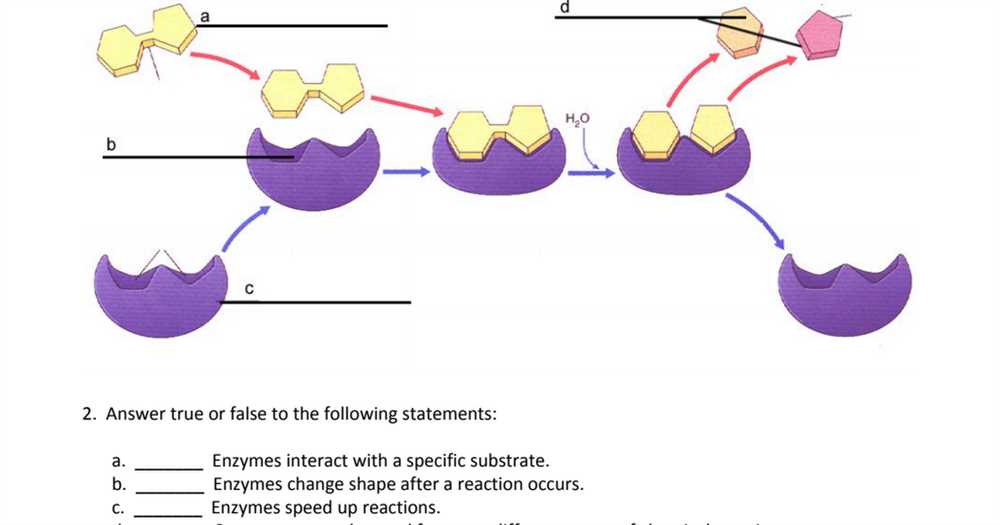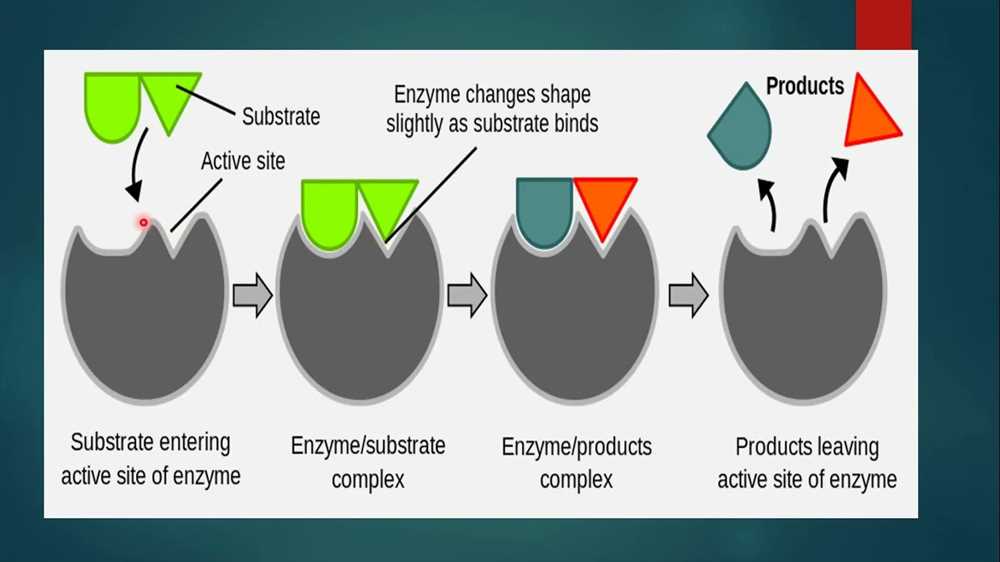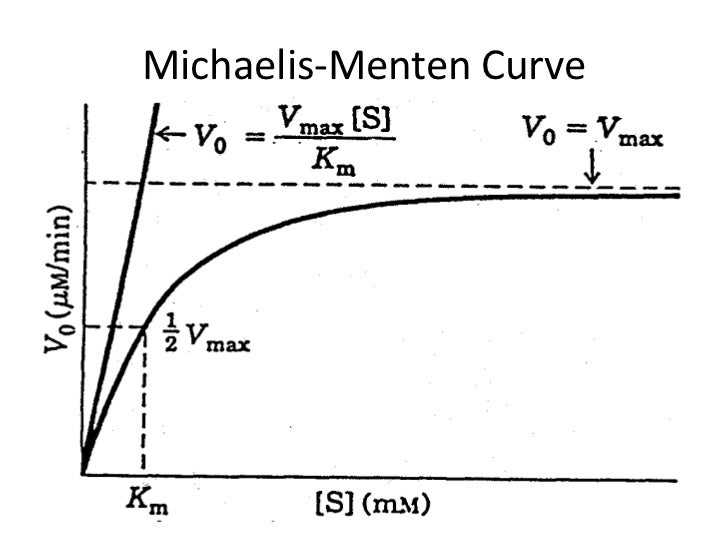
Enzymes are vital molecules that play a crucial role in various biological processes. As catalysts, they speed up chemical reactions in the body, making them essential for maintaining optimal physiological functions. Whether you’re a student studying biochemistry or simply curious about how enzymes work, this comprehensive Questions and Answers PDF will provide you with a deeper understanding of this fascinating topic.
Within this PDF, you’ll find answers to frequently asked questions about enzymes, their functions, and their significance in various biological systems. From the basics of enzyme structure and classification to the specific enzymatic reactions that occur in cellular metabolism, this resource covers it all.
Discover the intricacies of enzyme kinetics and learn about the factors that affect enzyme activity. Explore the concept of enzyme inhibition and find out how it can be both beneficial and detrimental to living organisms. Gain insights into the importance of enzymes in industries such as pharmaceuticals, food production, and more.
Whether you’re looking for a quick refresher or a comprehensive guide, this Enzymes Questions and Answers PDF has you covered. Dive into the world of enzymes and expand your knowledge on this fundamental topic!
What are enzymes?

Enzymes are biological catalysts that play a crucial role in speeding up chemical reactions in living organisms. They are complex proteins that are capable of facilitating chemical reactions by binding to specific molecules, known as substrates, and converting them into products. Enzymes are essential for maintaining and regulating various biochemical processes in cells.
Enzymes possess a unique three-dimensional structure that allows them to interact with specific substrates. This specific binding mechanism between enzymes and substrates is known as the lock-and-key model. Each enzyme has an active site, a region where the substrate binds and the catalysis takes place. The interaction between the enzyme and substrate is highly specific, similar to how a key fits into a lock.
Enzymes are capable of performing their functions under mild conditions of temperature and pH, making them highly efficient in biological systems. They are also capable of catalyzing reactions in both forward and reverse directions, allowing them to participate in metabolic pathways and maintain equilibrium. Enzymes can be classified into various types based on their functions, such as hydrolases, oxidoreductases, transferases, and ligases, among others.
Overall, enzymes are crucial for the proper functioning of living organisms as they regulate and facilitate a wide range of chemical reactions. They are involved in processes such as digestion, metabolism, DNA replication, and protein synthesis. Understanding the mechanisms and properties of enzymes is essential in various fields of study, including biochemistry, medicine, and biotechnology.
How do enzymes work?
Enzymes are biological catalysts that play a crucial role in speeding up chemical reactions in living organisms. They work by lowering the activation energy required for a reaction to occur, thus increasing the rate of the reaction. Enzymes achieve this by binding to specific molecules, called substrates, and facilitating the transformation of these substrates into products.
Enzymes have a unique three-dimensional shape that allows them to recognize and bind to specific substrates. This specificity is essential for the enzyme to catalyze the correct reaction in a complex mixture of molecules. The area of the enzyme that binds to the substrate is called the active site. The active site and the substrate have complementary shapes, similar to a lock and key, which ensures a precise fit. Once the substrate binds to the active site, the enzyme undergoes a conformational change that brings the reactive groups of the enzyme and substrate into close proximity, enabling the catalytic reaction to take place.
During the catalytic reaction, enzymes can employ different mechanisms to facilitate the conversion of substrates into products. One common mechanism is called the induced fit model. In this model, the binding of the substrate to the enzyme induces a change in the enzyme’s shape, often through the movement of certain amino acid residues. This change in shape creates an optimal environment for the reaction to occur, such as providing the necessary charge distribution or stabilizing the transition state of the reaction.
In addition to their catalytic function, enzymes also play a vital role in regulating biological processes. They can be regulated through various mechanisms, including feedback inhibition, where the end product of a metabolic pathway inhibits the enzyme responsible for its production. This feedback inhibition helps maintain the balance of metabolic reactions in the cell.
In summary, enzymes work by binding to specific substrates and facilitating chemical reactions by lowering the activation energy required for these reactions to occur. Their unique shape, active site, and catalytic mechanisms allow them to carry out their functions with remarkable specificity and efficiency. Understanding how enzymes work is essential in various fields, including medicine, biotechnology, and biochemistry.
What are the different types of enzymes?
Enzymes are proteins that act as biological catalysts, facilitating chemical reactions in living organisms. They play a crucial role in various metabolic processes, helping to speed up reactions that would otherwise occur too slowly to sustain life. Enzymes are highly specific, meaning that each enzyme is designed to catalyze a particular reaction. There are several different types of enzymes, each with its own unique function and characteristics.
One type of enzyme is called a hydrolase. Hydrolases are responsible for breaking down molecules by adding water. They are involved in important processes such as digestion, where they break down large complex molecules, such as carbohydrates, proteins, and lipids, into their smaller building blocks. Examples of hydrolases include amylase, which breaks down starch, and lipase, which breaks down fats.
Oxidoreductases are another type of enzyme that catalyze oxidation-reduction reactions. These enzymes facilitate the transfer of electrons between molecules, resulting in the production or removal of oxygen or hydrogen. Examples of oxidoreductases include alcohol dehydrogenase, which converts alcohol into aldehyde, and cytochrome c oxidase, which is involved in the electron transport chain during cellular respiration.
Another important group of enzymes is called transferases. These enzymes are responsible for transferring functional groups, such as a phosphate or methyl group, from one molecule to another. Transferases play a vital role in various cellular processes, such as DNA replication, protein synthesis, and energy metabolism. Examples of transferases include hexokinase, which transfers a phosphate group to glucose during glycolysis, and DNA methyltransferase, which adds a methyl group to DNA molecules.
- Hydrolases
- Oxidoreductases
- Transferases
- Ligases
- Isomerases
- Lyases
Ligases are enzymes that are involved in joining two molecules together, typically through the formation of a new chemical bond. They are essential for processes like DNA replication and the synthesis of proteins. Examples of ligases include DNA ligase, which joins DNA strands together during replication and repair, and ATP synthase, which synthesizes ATP by joining phosphate groups to adenosine diphosphate (ADP).
Isomerases are enzymes that catalyze the rearrangement of molecules, changing their structure or position of functional groups. They are involved in processes such as carbohydrate metabolism and the synthesis of fatty acids. Examples of isomerases include glucose-6-phosphate isomerase, which converts glucose-6-phosphate to fructose-6-phosphate during glycolysis, and triose phosphate isomerase, which converts dihydroxyacetone phosphate to glyceraldehyde-3-phosphate in glycolysis.
Finally, lyases are enzymes that facilitate the cleavage of various chemical bonds within a molecule, resulting in the formation of new compounds. They are involved in processes such as the breakdown of amino acids and the synthesis of certain vitamins. Examples of lyases include carbonic anhydrase, which converts carbon dioxide and water into carbonic acid, and fumarase, which catalyzes the conversion of fumarate to malate in the citric acid cycle.
In conclusion, enzymes are essential for life as they facilitate numerous chemical reactions in living organisms. The different types of enzymes, such as hydrolases, oxidoreductases, transferases, ligases, isomerases, and lyases, each play a unique role in metabolic processes, contributing to the overall functioning and survival of an organism.
The Role of Enzymes in the Body
Enzymes play a crucial role in various biological processes within the human body. They are proteins that act as catalysts, speeding up chemical reactions necessary for the body to function properly. Without enzymes, many essential processes would occur too slowly or not at all, leading to severe health issues.
Metabolism: One of the primary functions of enzymes is to facilitate metabolism. They break down large molecules into smaller ones, allowing the body to absorb and utilize nutrients effectively. For example, enzymes like amylase help break down carbohydrates into simple sugars, while lipase aids in the digestion of fats.
Energy Production: Enzymes also play a crucial role in energy production. They are involved in the process of glycolysis, the breakdown of glucose to release energy. Enzymes, such as ATP synthase, are responsible for synthesizing adenosine triphosphate (ATP), the body’s main energy currency.
Immune System: Enzymes are involved in the body’s immune response. They help break down harmful substances, like toxins or bacteria, by promoting the activity of immune cells. Enzymes like lysozyme attack bacterial cell walls, aiding in the destruction of pathogens.
DNA Replication and Repair: Enzymes called DNA polymerases play a crucial role in DNA replication and repair. They ensure the accurate copying of DNA strands during cell division, maintaining the integrity of genetic information.
Detoxification: Enzymes in the liver, such as cytochrome P450, are involved in the detoxification of drugs, toxins, and other harmful substances. They help convert these substances into less harmful or more easily excretable forms.
Overall, enzymes are essential for the proper functioning of the human body. They enable vital biological processes, including digestion, energy production, and immune responses. Without enzymes, many crucial life processes would be severely disrupted, leading to significant health issues.
How are enzymes used in industry?

Enzymes play a crucial role in various industries due to their ability to catalyze chemical reactions. The use of enzymes in industry has revolutionized many processes, making them more efficient, cost-effective, and environmentally friendly. Here are some ways enzymes are used in different industries:
Food Industry:
- Food Processing: Enzymes are utilized in food processing to improve and enhance the quality of food products. For example, amylases are used in baking to break down starches into sugars, which facilitates the fermentation process and improves the texture and flavor of the final product.
- Beverage Production: Enzymes are employed in the production of various beverages such as wine, beer, and fruit juices. They aid in the clarification, filtration, and flavor development of these products.
- Dairy Industry: Enzymes like rennet are used in cheese making to coagulate milk proteins, resulting in the formation of curds. This process is essential for cheese production.
Textile Industry:
- Biofinishing: Enzymes are used in textile processing to achieve desirable fabric properties. For example, cellulase enzymes are utilized to remove the fuzziness and pilling on the surface of cotton fabric.
- Bleaching: Enzymes such as peroxidases and catalases are used in the bleaching process of textile fibers, reducing the use of harsh chemicals and promoting environmental sustainability.
Pharmaceutical Industry:
- Drug Manufacturing: Enzymes are extensively used in the production of pharmaceutical drugs. They enable the synthesis of complex molecules, such as antibiotics and anticancer drugs, with high specificity and efficiency.
- Medical Diagnostics: Enzymes are employed in diagnostic tests to detect and measure specific molecules in biological samples. Enzyme-linked immunosorbent assays (ELISAs) are commonly used in medical laboratories to diagnose various diseases.
These are just a few examples of how enzymes are utilized in various industries. Their wide range of applications and benefits continue to drive advancements in industrial processes, leading to improved products and a more sustainable future.
Factors Affecting Enzyme Activity
Enzymes are essential for performing various biochemical reactions in living organisms. However, their activity can be influenced by several factors, which can either enhance or inhibit their function. Understanding these factors is crucial for optimizing enzyme activity in various applications.
1. Temperature
Temperature plays a critical role in enzyme activity. As the temperature increases, the rate of enzyme-catalyzed reactions also increases, due to the higher kinetic energy of the molecules involved. However, at extremely high temperatures, enzymes can denature, losing their three-dimensional structure and, consequently, losing their activity. On the other hand, at low temperatures, enzyme activity slows down.
2. pH
pH level is another important factor affecting enzyme activity. Each enzyme has an optimal pH range at which it functions most efficiently. Deviations from this optimal pH can lead to a decrease in enzyme activity or even denaturation. For example, the enzyme pepsin, which functions in the acidic environment of the stomach, becomes inactive when exposed to basic pH levels.
3. Substrate Concentration
Substrate concentration can also affect enzyme activity. As the concentration of substrate increases, the rate of reaction initially increases due to more collision between enzyme and substrate molecules. However, at high substrate concentrations, the enzyme becomes saturated, and further increase in substrate concentration does not significantly affect the rate of reaction.
4. Enzyme Concentration
Enzyme concentration also plays a crucial role in determining the rate of enzyme-catalyzed reactions. As the enzyme concentration increases, the rate of reaction also increases, until all the substrate molecules are converted into products. Beyond this point, further increase in enzyme concentration does not affect the reaction rate.
In summary, factors such as temperature, pH, substrate concentration, and enzyme concentration can significantly influence enzyme activity. Understanding and optimizing these factors are essential for maximizing the efficiency of enzymatic processes in various fields, including medical, industrial, and research applications.